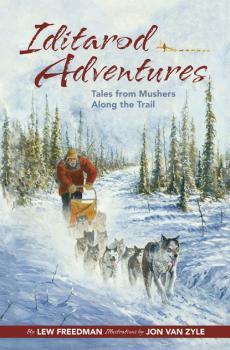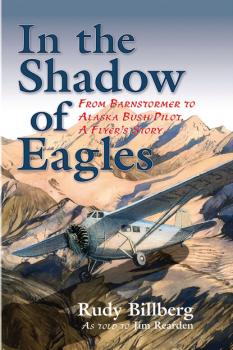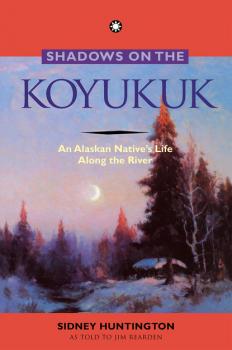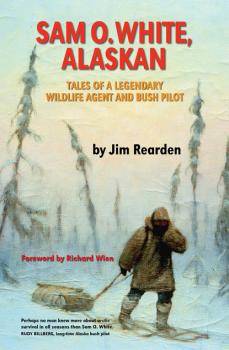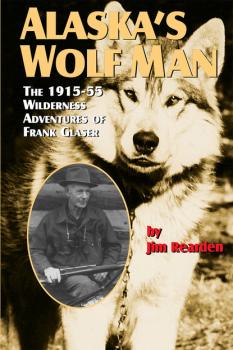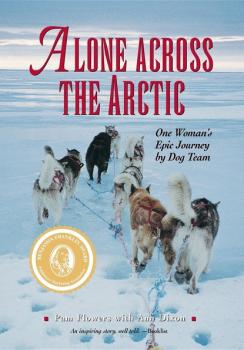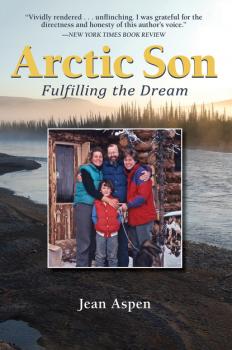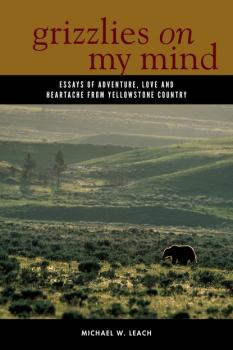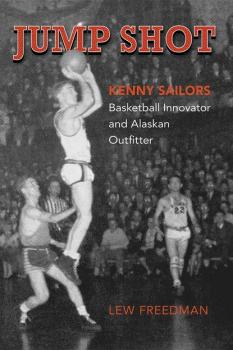ТОП просматриваемых книг сайта:
Биографии и Мемуары
Различные книги в жанре Биографии и Мемуары, доступные для чтения и скачиванияАннотация
In IDITAROD ADVENTURES, mushers explain why they have chosen this rugged lifestyle, what has kept them in long-distance mushing, and the experiences they have endured along that unforgiving trail between Anchorage and Nome. Renowned sports writer Lew Freedman profiles 23 mushers—men, women, Natives, seasoned veterans, and some relatively new to the demanding sport, many of whom are so well-known in Alaska that fans refer to them only by their first names. The book also features interviews with administrators who organize the event and make sure it happens every year, volunteers, and others whose connection to the Iditarod is self-evident even if they don’t have an official title.
Аннотация
In the Shadow of Eagles is a uniquely American saga. Rudy Billberg’s story takes readers through the great age of aviation, from his first airplane ride in Minnesota in 1927 to his bush flying career in Alaska beginning in 1941. One of the authentic aviation pioneers, Billberg writes of his countless adventures and close calls during the decades; stunt flying in Midwestern air shows, flying out of Nome into the frozen Arctic, and more. Filled with history and insight, Billberg’s narrative chronicles the lives of many of his fellow Alaskan pilots, including the great pioneer airmen Joe Crosson, Harold Gillam, Noel Wien and Sam White, and tells of the early flying machines they all flew—Travel Airs, Pilgrims, Fairchilds, Bellancas. Rudy Billberg has given us a great story of his time.
Аннотация
“I owe Alaska. It gave me everything I have.” Says Sidney Huntington, son of an Athapaskan mother and white trader/trapper father. Growing up on the Koyukuk River in Alaska’s harsh Interior, that “everything” spans 78 years of tragedies and adventures. When his mother died suddenly, 5-year-old Huntington protected and cared for his younger brother and sister during two weeks of isolation. Later, as a teenager, he plied the wilderness traplines with his father, nearly freezing to death several times. One spring, he watched an ice-filled breakup flood sweep his family’s cabin and belongings away. These and many other episodes are the compelling background for the story of a man who learned the lessons of a land and culture, lessons that enabled him to prosper as trapper, boat builder, and fisherman. This is more than one man's incredible tale of hardship and success in Alaska. It is also a tribute to the Athapaskan traditions and spiritual beliefs that enabled him and his ancestors to survive. His story, simply told, is a testament to the durability of Alaska's wild lands and to the strength of the people who inhabit them.
Аннотация
Sam O. White was a tough, deep-voiced, six-foot-tall, two-hundred-pound former Maine lumberjack and guide. From 1922, for half a century he criss-crossed wild Alaska by foot, with packhorses, dog teams, canoe, riverboat, and airplane. He helped map the Territory. He trapped fur. He became the world’s first flying game warden. White wrote exciting tales about his Alaska adventures. Those writings make up the bulk of this volume. In 1927, he arrived at Fort Yukon as a game warden when millions of dollars worth of fine arctic furs annually arrived there. The hardy frontier trappers considered the new game warden a joke, but he quickly taught them to respect conservation laws. He was frustrated by the impossibility of adequately patrolling thousands of square miles by dog team, boat, and on foot. With his own money he bought an airplane. Pioneer pilots Noel and Ralph Wien taught him how to fly it. White then startled remote trappers and others by suddenly arriving from the sky. In 1941, lack of backing from Juneau headquarters caused him to resign as a wildlife agent. At Fairbanks, Noel Wien made him Chief Pilot for Wien Airlines. For the next two decades White flew as an Alaskan bush pilot, admired for his flying skill and the superior service he provided residents who flew with him, and who depended upon him for receiving mail and supplies. He had countless friends—one hundred arrived for his seventieth birthday party. His integrity and principles were of the highest. Decades after his death, he is still spoken of with awe by he lings-time Alaskans. White write exciting takes about his Alaska adventures. Those writings make up the bulk of this volume.
Аннотация
Between 1915 and 1955 adventure-seeking Frank Glaser, a latter-day Far North Mountain Man, trekked across wilderness Alaska on foot, by wolf-dog team, and eventually, by airplane. In his career he was a market hunter, trapper, roadhouse owner, professional dog team musher, and a federal predator control agent. A naturalist at heart, he learned from personal observation life secrets of moose, caribou, foxes, wolverine, Dall sheep, grizzly bears, and wolves—especially wolves. A superb shot, self-sufficient, and wilderness wise, Glaser not only survived, but prospered in the far lonely places. Almost always alone, he survived many encounters with charging grizzly bears, some of which he had to shoot to keep from being mauled. He knew how to cope with 50 and 60 below zero temperatures, and more than once he plunged through the ice in extreme cold and survived only because of his woods know-how.
Аннотация
Eight sled dogs and one woman set out from Barrow, Alaska, to mush 2,500 miles. ALONE ACROSS THE ARCTIC chronicles this astounding expedition. For an entire year, Pam Flowers and her dogs made this epic journey across North America arctic coast. The first woman to make this trip solo, Pam endures and deals with intense blizzards, melting pack ice, and a polar bear. Yet in the midst of such danger, Pam also relishes the time alone with her beloved team. Their survival–her survival–hinges on that mutual trust and love.
Аннотация
The chronicle of a family's first year alone in Alaskan wilderness, here is a poetic exploration into what we value in life. In 1992 Jean Aspen took her husband, Tom, and their young son to live in Alaska's interior mountains where they built a cabin from logs, hunted for food, and let the vast beauty of the Arctic close around them. Jean had faced Alaska's wilderness alone before in a life-altering experience she shared in Arctic Daughter . Cut off from the rest of the world for more than a year, now her family would discover strength and beauty in their daily lives. They candidly filmed themselves and later produced a companion documentary, ARCTIC SON: Fulfilling the Dream, which shows on PBS stations across the nation. From an encounter with a grizzly bear at arm's length to a challenging six-hundred-mile river passage back to civilization, Arctic Son chronicles fourteen remarkable months alone in the Brooks Range. At once a portrait of courage, a lyrical odyssey, and authentic adventure, this is a family's extraordinary journey into America's last frontier.
Аннотация
What is it about Yellowstone National Park that draws millions of visitors from all over the world? If you've visited Yellowstone, you should already know the answer. If you've never visited—or you have, but still don't know the answer—Michael Leach explains it to you in his book of essays, «Grizzlies on My Mind.» Leach is a Yellowstone insider with unmatched passion for this nation's first national park. At the age of twenty-two, Leach's dream of becoming a Yellowstone ranger came true. It wasn't long before he'd earned the nickname «Rev» for his powerful Yellowstone «sermons.»
In «Grizzlies on My Mind,» Leach shares his love for Yellowstone—its landscapes and wildlife, especially its iconic bison and grizzlies—as he tells tales that will delight anyone interested in the national park system, wildlife and wild landscapes, rivers and adventure. Heartwarming and heartbreaking stories of human lives lost, efforts to save a black bear cub, a famous wolf who helped Leach through some dark personal days, the unique and oftentimes humorous Yellowstone «culture,» backpacking trips that nearly ended in disaster, and Leach's spiritual journey with his Assiniboine-Gros Ventre «brother» fill the pages—and the reader's heart.
If you've never been charged by an elk, traveled solo at dawn across Yellowstone's frigid interior (working your way slowly through a herd of peaceful bison in the process), or lain awake in a backcountry tent, listening for the spine-tingling breaths of a curious grizzly—but you crave such experiences, «Grizzlies on My Mind» is the book for you.
In «Grizzlies on My Mind,» Leach shares his love for Yellowstone—its landscapes and wildlife, especially its iconic bison and grizzlies—as he tells tales that will delight anyone interested in the national park system, wildlife and wild landscapes, rivers and adventure. Heartwarming and heartbreaking stories of human lives lost, efforts to save a black bear cub, a famous wolf who helped Leach through some dark personal days, the unique and oftentimes humorous Yellowstone «culture,» backpacking trips that nearly ended in disaster, and Leach's spiritual journey with his Assiniboine-Gros Ventre «brother» fill the pages—and the reader's heart.
If you've never been charged by an elk, traveled solo at dawn across Yellowstone's frigid interior (working your way slowly through a herd of peaceful bison in the process), or lain awake in a backcountry tent, listening for the spine-tingling breaths of a curious grizzly—but you crave such experiences, «Grizzlies on My Mind» is the book for you.
Аннотация
Kenny Sailors was a basketball star, and the inventor of the jump shot. He attended the University of Wyoming and was MVP in 1943 in college AA basketball. After WWII, he spent five years as an early player in the new NBA. As a youngster, Kenny was five‑foot‑seven but his older brother was six‑foot‑two so when playing basketball, Kenny had to jump up over his brother to get off a shot. That is how the jump shot was born, and Kenny used it in college and professional basketball. He played in Denver and several other cities whose team names have now changed, but he also played for the Boston Celtics with Bob Cousy. After he left the NBA, he moved to Alaska and in 1965 settled in the Glennallen area, where he was a fishing and hunting guide in the Wrangle Mountains for thirty‑five years. He now lives in Idaho, and his son lives and flies aircraft from Antioch, California.
Аннотация
Kim Rich was an ordinary girl trapped in an extraordinary childhood, someone who dreamed of going to parties and getting good grades while living in an after‑hours hell of pimps and con men. Kim Rich longed for normalcy, yet she was inescapably her father's child, and she had no choice but to grow up fast. Her mother was a stripper and B‑girl: her father was a major player in the underworld of Anchorage, Alaska in the sixties, a city flush with newfound oil money. Only after her father was gruesomely murdered and Kim became a journalist was she able to fill in the missing pieces of one American dream gone horribly wrong. Kim's true story is a tale of a woman's search for her parent's secrets. What she finds is both shocking and tragic, but in the end she's able to discover her true self amid the remnants of her parents' lost lives.

